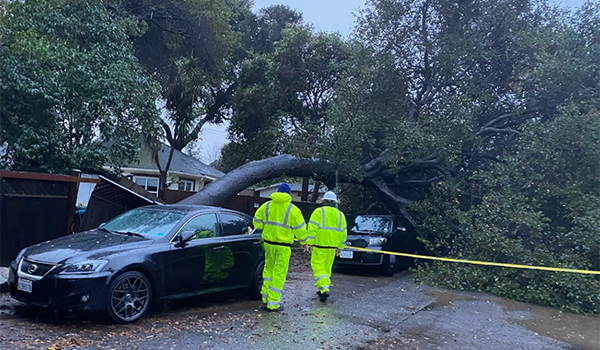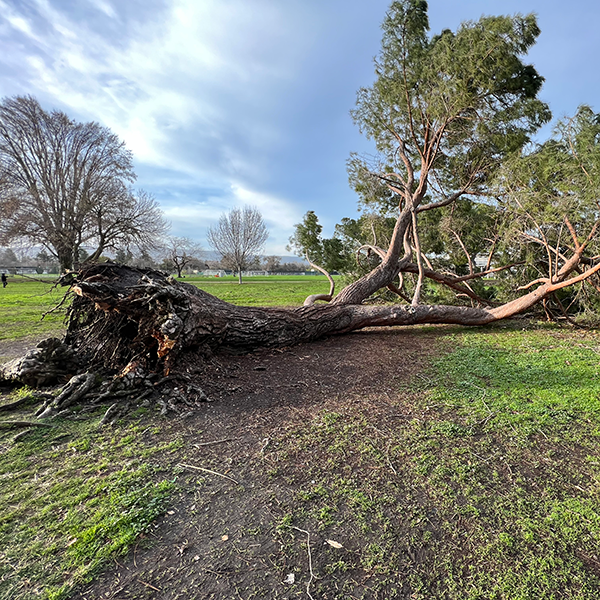- About Us
- Our Work
- Tree Info
- Get Involved
- Blog
- Volunteer
- Support Us
By Canopy Team on March 30, 2023

The City of East Palo Alto's Public Works department responds to a fallen tree on Cooley Avenue.
Since the New Year, waves of wet, winter storms have impacted our environment in heartbreaking ways. Beloved trees have fallen or have been damaged by windy and wet conditions, and our communities have experienced fear, loss, and property damage due to the storms. Trees that bring us so many benefits, joy, and comfort can cause us to pause and look at the canopy with a new perspective as intense storms push the limits of drought-stressed trees.

Canopy’s work is done in a complex urban matrix and we do so in concert with our community residents, partners, and institutions. We are thankful we can field phone calls and help triage work for our broad community of urban forestry. When we see our partners in the field working long days, we are grateful for the collective efforts and support to keep our trees as healthy as we can in times of feast (oh so much water and wind) or famine (fires and drought).
We have been in touch with the urban foresters in our service communities to track the data on impacted trees and will use this information to continue planting the right trees in the right place and appropriately managing our tree canopy. It is important to understand how many and what kinds of trees were lost and what caused the failures to help maintain the existing urban forest, and to continue planting appropriately for a climate resilient future.

As more storms may approach, please refer to our post on how to prepare your trees for storms and extreme weather and take note of your city’s emergency contact information. Please be careful post-storm if you have any tree-related damage, and take appropriate measures to involve your city or an arborist in the clean-up process.
The Arbor Day Foundation has a quick guide to post-storm tree care. Please avoid over-pruning or topping your trees. Over-pruning can cause additional stress to an already damaged tree, and topping your tree can cause new stubs or branches to be weakly attached and more likely to break in future storms. Topping a tree also puts a significant amount of stress on an already damaged tree and will likely lead to a decline in health, poor recovery, or failure of the tree itself over time or in a significant storm.
In the meantime, please continue to care for your trees and yourselves. If you’re uncertain about the safety or condition of your tree(s), please consider hiring an arborist to professionally evaluate the health or risk of your tree. Canopy has compiled a list of arborists to review as well as general guidelines on how or why to hire an arborist. You can also contact Canopy for general questions through our Tree Care Hotline.
Canopy is committed to the work of retaining and building a robust urban canopy for the benefit of all. As we’ve all learned over the past few years, responding and supporting our communities is important life-saving work. As the world adapts, Canopy often returns to a quote from Wangari Maathai, founder of the Green Belt Movement and 2004 Nobel Peace Prize Laureate, “When we plant trees, we plant the seeds of peace and the seeds of hope.” Please take care of yourselves and your communities. We look forward to continuing to work together with all our partners.
